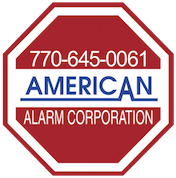Do You Know the Four Classes of Fires?
The ability to confront fires depends in part on how prepared you are to handle the various types of fires that exist. These disasters are not all created equal. In fact, the source of the blaze is one of the main factors in determining how best to respond, as some extinguishers will exacerbate the danger if used in the wrong situation. Homeowners should have Fire Alarm Monitoring Systems installed in their homes.
The Occupational Safety and Health Administration separates fire extinguishers into four classes based on the type of flames they are intended to be used against. It is important to understand these distinctions, as you don’t want to end up causing more damage to your home or business by using the wrong extinguisher:
- Class A – These are used for fires that are being fueled by conventional substances such as wood, paper and cloth. To put out such combustibles, it is necessary to use a dry chemical extinguisher which is labeled with an “A” in a green triangle.
- Class B – For fires involving gas, grease or other liquid substances, these devices will be labeled with a “B” in a square, sometimes colored red.
- Class C – If the fire involves live electrical wires or equipment, this is the most appropriate class. It is marked by a “C” inside a blue circle.
- Class D – You should extinguish any flames involving metal combustibles, such as magnesium, titanium, zirconium, sodium and potassium, using this classification. It should be labeled with a “D” in a yellow, five-pointed star.
Some extinguishers will have multiple classifications, indicating that they can be used for varying classes of fire.
If you’re unsure whether your facilities are adequately protected against fire hazards, make sure you call an Atlanta alarm company to schedule a fire alarm inspection, during which you’ll receive guidance on how best to arm yourself against these disasters. Contact American Alarm at (770) 645-0061 for more information.
